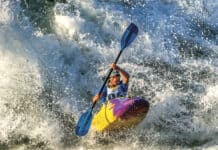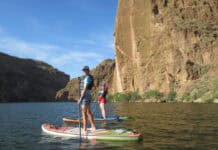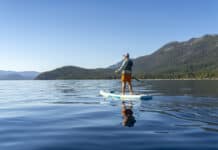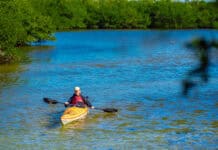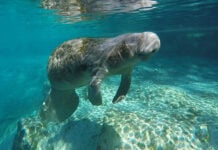The same ingredients that make Algonquin Park an incredibly diverse haven for fish also make the park an outstanding destination for anglers. Algonquin offers a rare combination of headwater lakes and rivers, seclusion and protection from development. Many of the park’s more than 1,500 lakes and 1,200 kilometres of streams and rivers lie in the undisturbed backcountry, and see only a small number of anglers each year. Lakes along the Highway 60 corridor, where fishing pressure is higher, have special regulations to ensure their populations are not overfished.
No less than 54 different species of fish have been recorded in Algonquin Park, but it’s the world-class trout fishing that draws many anglers from across Ontario and beyond. Algonquin is home to over 25 percent of Ontario’s remaining native brook trout lakes and streams—the highest concentration found anywhere in the world—and about 10 percent of the province’s native lake trout lakes.
View this post on Instagram
The Algonquin Park fishing season opens on the last Saturday in April and ends September 30th. Spring offers the best Algonquin fishing opportunities for lake and brook (also known as speckled) trout, when these cold-water fish are found closer to the surface. Bass season opens in late June, and both largemouth bass and smallmouth bass are popular summer targets. Other Algonquin game fish include walleye, northern pike and muskellunge. Many experienced anglers say the best fishing is found deep in the heart of Algonquin Park’s backcountry, accessible only by paddling and portaging the park’s fantastic canoe routes.
Everyone can enjoy Algonquin Park fishing trips—whether you’re a first-time fisher feeling the tug of summer smallmouth on your line, or an avid angler targeting wary brook trout in secret backcountry streams.
[This article is part of the Ultimate Algonquin Park Travel Guide 2021. Find all the resources you need to plan an adventure-filled trip to Algonquin Park.]
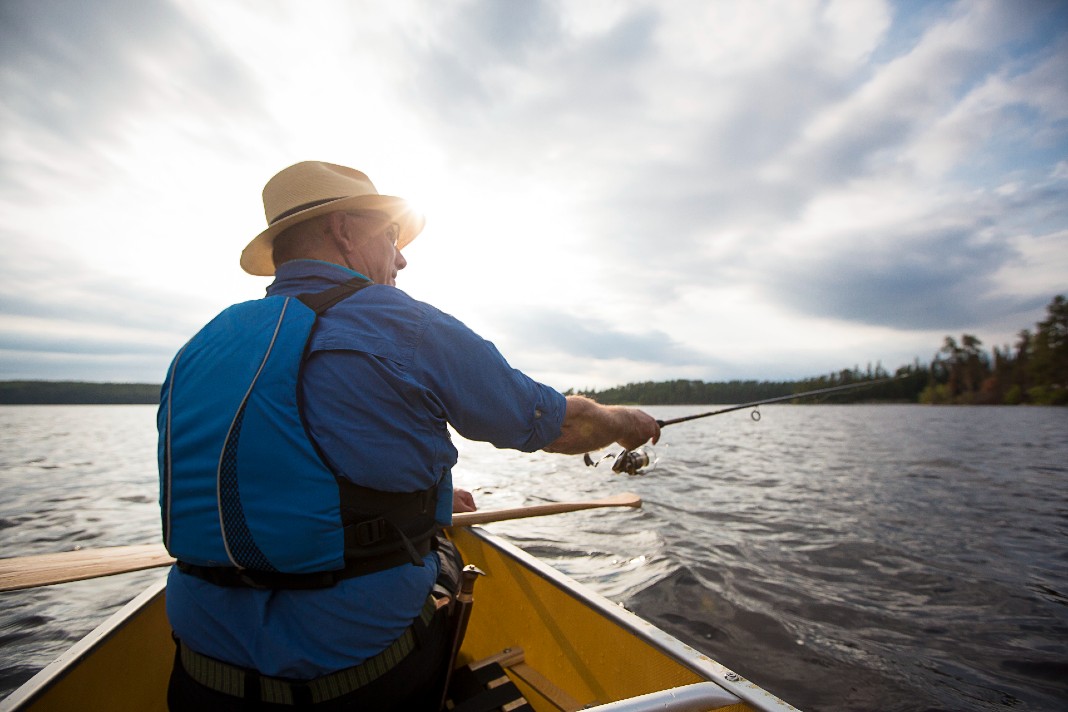
Algonquin Park fishing license
Most people fishing in Algonquin Park need to purchase and carry a provincial Outdoors Card and Ontario Recreational Fishing License. Ontario residents under 18 and over 65 years of age do not require a fishing license. Prior to your trip, be sure to check the current Ontario Recreational Fishing Regulations Summary to ensure all specific rules are followed.
Ontario Outdoors Cards and Recreational Fishing Licenses are available for purchase online or in Algonquin Park at the West Gate, East Gate, Canoe Lake Access Point and Lake Opeongo Access Point. Learn more about Ontario fishing license requirements and fees here.
Canadian residents are provided four opportunities throughout the year to fish without having to purchase a license: Ontario Family Day weekend (February), Mother’s Day weekend (May), Father’s Day weekend (June) and Ontario Family Fishing Week (July). Find upcoming license-free family fishing dates here.
If you are just getting started in the world of fishing, check out Ontario’s Learn to Fish Guide for a host of helpful tips and techniques on everything from tackle and equipment to species identification and fishing responsibly.
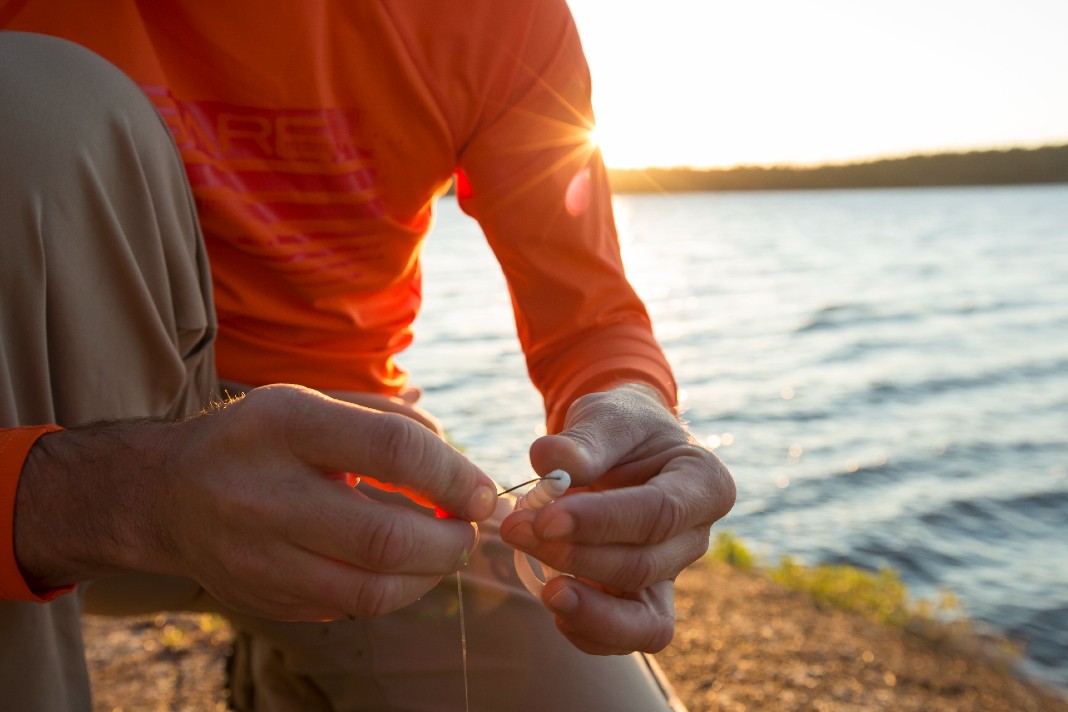
Algonquin Park fishing rules
Algonquin Park is a very special fishery and thus has special fishing regulations to ensure the protection of the park’s fragile and irreplaceable native fisheries. These restrictions include:
- Possession, capture or use of live baitfish is prohibited in Algonquin Park
- Possession of any amphibian or reptile—such as frogs or salamanders—is prohibited at all times
- No fishing within 100 meters of any dam in Algonquin Park
- No winter fishing in Algonquin Park (designated fish sanctuary from December 1 to late April)
- Harvested fish should be packaged individually in clear plastic. A large patch of skin must be left on all fish fillets for identification purposes.
Worms are permitted as bait in Algonquin Park, but anglers are encouraged to dispose of unused worms in garbage containers (not on the ground) as worms are not native to Algonquin Park and may negatively impact soil communities.
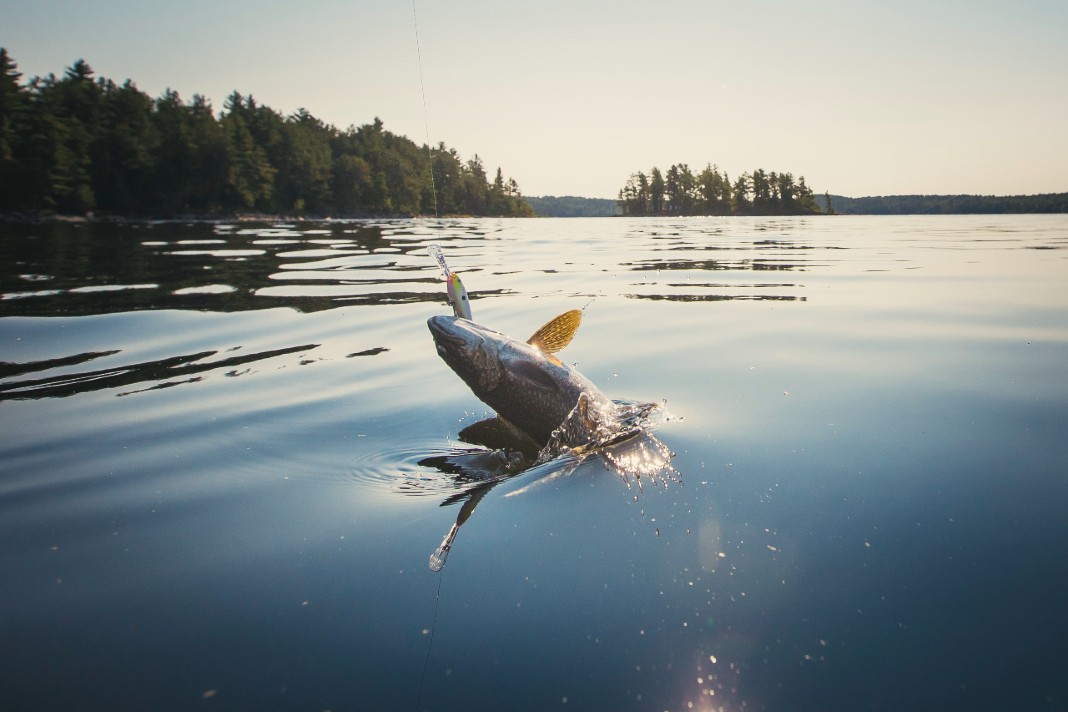
Several excellent speckled (brook) trout lakes have been established where only artificial lures may be used and lower catch limits apply. Slot size limits and designated voluntary catch-and-release lakes are also having positive effects on the Algonquin Park fishery. A recent trout fishing survey showed that conscientious park anglers were releasing over 60 percent of the fish they caught.
These special Algonquin Park fishing regulations are in addition to all applicable provincial regulations—see the Ontario Fishing Regulations Summary for more details. Algonquin is located within Ontario’s Fisheries Management Zone 15; refer to the summary for zone-wide seasons and limits, as well as species exceptions and waterbody exceptions.
Ice fishing in Algonquin
Algonquin Park is a designated fish sanctuary during the winter months, ensuring the park’s fish populations continue to thrive for future generations. Since fishing in the park is closed from December 1st through late April, ice fishing Algonquin Park is effectively prohibited.
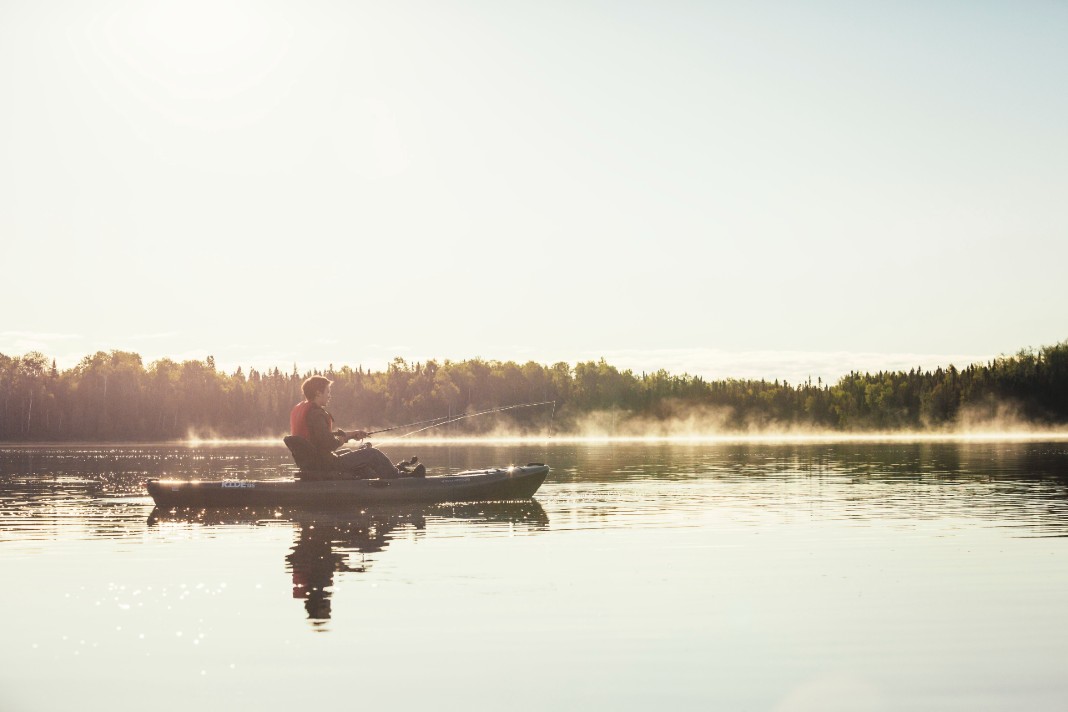
Algonquin Park best fishing spots
There are good fishing opportunities just about everywhere in Algonquin Park. Ask park staff or drop by a local outfitter like Algonquin Bound or Algonquin Outfitters to find out what’s hot and get expert advice to increase your fishing success.
The quieter lakes near the park’s East Gate are always a good bet, but there are just as many hidden gems near Algonquin’s West Gate and Sand Lake Gate. Canoe-in-only interior lakes offer the absolute best brook trout fishing in Algonquin Park. If you are unwilling or unable to travel into the park’s interior, most road-access lakes in Algonquin Park offer fantastic smallmouth bass and lake trout fishing.
Check out Jeff’s Algonquin Map or Backroad Mapbooks’ Algonquin Park Topographic Adventure Map—both maps indicate which fish species you will find in Algonquin Park lakes, and are a must if you are canoeing into the backcountry to fish.
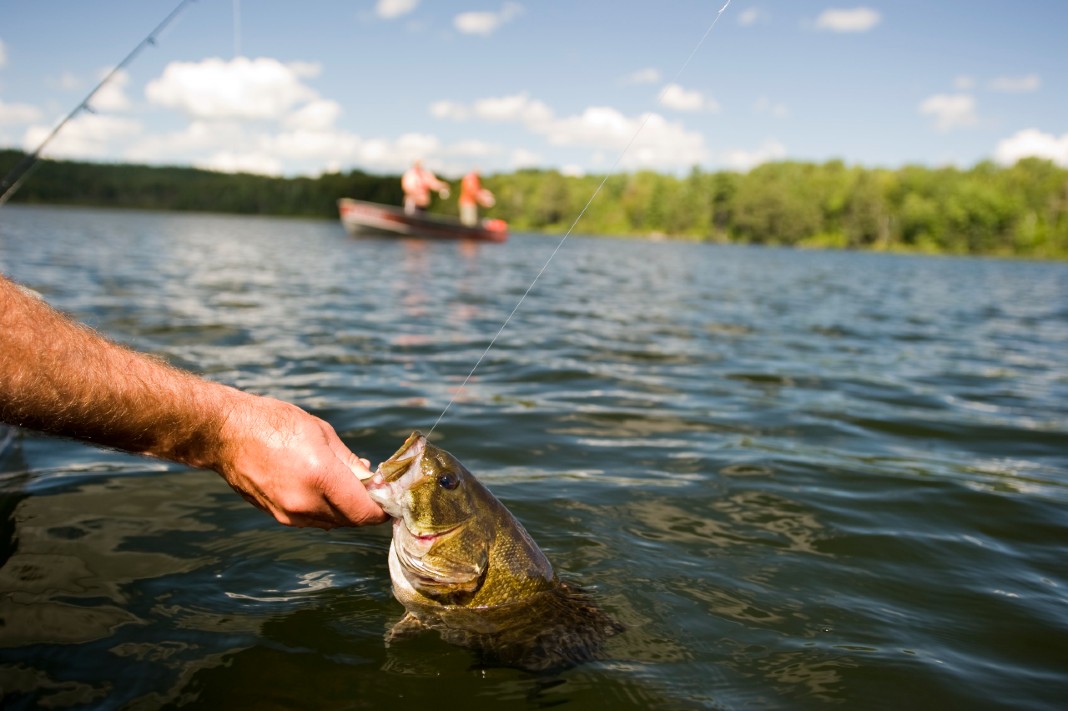
Fishing Algonquin’s Canoe Lake
Algonquin Park’s busiest lake, Canoe Lake is home to smallmouth bass and lake trout, as well as hundreds of eager paddlers on sunny summer weekends. Canoe Lake is also open to boats with motors of 20 horsepower or less, so it experiences more fishing pressure than no-motor lakes. Access is from Highway 60 near KM 14, at the Canoe Lake Access Point. The Canoe Lake permit office sells fishing licenses and has fishing rods, reels and tackle boxes available for free loan as part of Ontario’s Tackle-Share program.
Fishing Algonquin’s Smoke Lake
Just across Highway 60 from Canoe Lake, Algonquin’s Smoke Lake is also patrolled by “smallies” and “lakers”. Algonquin Park smallmouth bass have a reputation as a hard-fighting sportfish; these feisty football-shaped fish gravitate to underwater drop-offs and rocky shoals or shorelines. Like its neighbour, Smoke Lake has a 20-horsepower motor limit and is another of Algonquin’s busier cottage lakes. Portage south into Ragged Lake to target the same species with less fishing pressure.
Fishing Algonquin’s Lake of Two Rivers
Lying right alongside Highway 60 between KM 32–35, Lake of Two Rivers is one of Algonquin Park’s most accessible lakes. Stay at Lake of Two Rivers Campground or Killarney Lodge and fish for lake trout and smallmouth bass. Troll for lakers near the surface in spring (May to June)—as the water warms, the fish go deeper. Boats with motors up to 20 horsepower are permitted on Lake of Two Rivers.
Fishing Algonquin’s Pog Lake
Just downstream from Lake of Two Rivers along the Madawaska River system, Pog Lake’s small size makes it easy to fish the whole lake from the Pog Lake Campground. You can even borrow free fishing rods, reels and tackle from the campground office as part of the Tackle-Share program, making Pog Lake a great destination for first-time anglers. Test your luck for smallmouth bass or lake trout.
View this post on Instagram
Fishing Algonquin’s North Tea Lake
In the northwest corner of Algonquin Park, accessible from the Kawawaymog Lake Access Point and a short paddle down the Amable du Fond River, North Tea Lake boasts loads of portage-free paddling, nearly 70 gorgeous backcountry campsites and tons of great fishing. North Tea Lake’s two distinct arms are home to lake trout and brook trout, as well as smallmouth bass. Trout season opens on the fourth Saturday in April, with the best fishing generally being in May or June. Boats with motors up to 10 horsepower are permitted on North Tea Lake.
Fishing Algonquin’s Cache Lake
Cache Lake is another of Algonquin Park’s popular Highway 60 lakes, found south of the highway near KM 24. Summer camps, a lodge and cottages dot the shores and islands, but Cache Lake’s numerous small bays nevertheless offer rewarding fishing for smallmouth bass and lake trout. Boats with motors up to 20 horsepower are permitted.
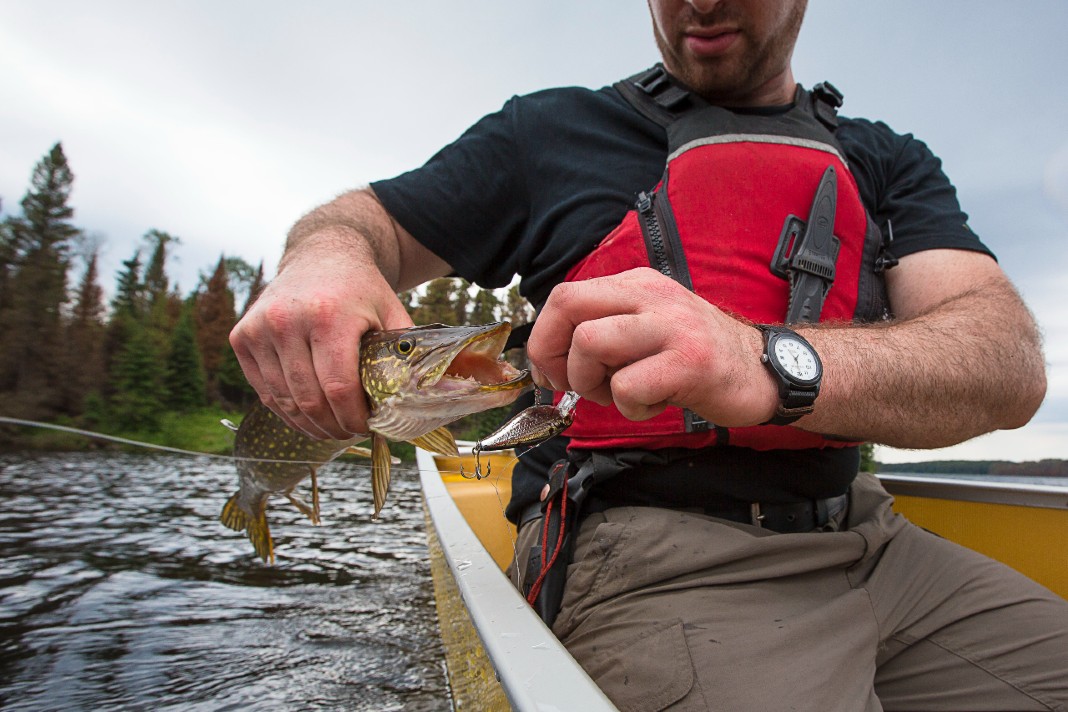
Fishing Algonquin’s Booth Lake
In eastern Algonquin, Booth Lake is accessed from the park’s Shall Lake Access Point, north of the village of Madawaska. Regarded as one of the most picturesque Algonquin Park interior lakes, Booth Lake is among the park’s best, easily accessible lakes for anglers. The lake’s varied shoreline of sand beaches, rock points, many bays and extensive wetlands is mirrored by a great diversity of fish species.
Booth Lake is one of Algonquin Park’s top destinations for lake trout fishing, and the upper reaches of the Opeongo River just north of the lake offer excellent brook trout habitat. Plus, the rocky shorelines of Booth and the smaller lakes en route—Crotch Lake, Farm Lake and Kitty Lake—are perfect for smallmouth bass and northern pike. Northern pike are an aggressive, fast-striking fish with a relatively limited range inside Algonquin Park. Identified by their long slender bodies with large mouths and sharp teeth, pike can often be found in the calm, weedy bays of Booth Lake or Shall Lake.
Fishing Algonquin’s Radiant Lake
A relatively recent addition to the Algonquin Park fishery, walleye (also known as pickerel) are found primarily in the northern part of the park. Anglers in pursuit of this elusive sportfish should head to Algonquin’s Brent/Cedar Lake Access Point. While you can troll for walleye in this large lake, paddling and portaging down the rapid-choked Petawawa River to Radiant Lake offers greater seclusion. Base yourself at a backcountry campsite on Radiant to fish this lake, the Petawawa River and smaller pickerel lakes downstream. Walleye season opens on the third Saturday in May and continues through November, with the best fishing in late May and early June.
View this post on Instagram
Fishing Algonquin’s Sunday Lake and Sproule Lake
Each year, Algonquin Park fisheries management stocks thousands of fish into dozens of lakes. Stocked fish are either a native strain of brook trout or splake. A fast-growing hybrid produced by crossing female lake trout and male brook trout, splake are specifically used to provide Put-Grow-Take fisheries in lakes that will not support populations of either parent fish.
Nestled in the hills southwest of Lake Opeongo and north of Highway 60, Sunday Lake and Sproule Lake are two small, adjacent interior lakes stocked with splake that can be found to 50 cm (20 inches). Access is easy from the lightly used Sunday Lake Access Point, off Highway 60 near KM 40. A handful of backcountry campsites on both lakes provide splake anglers with an ideal basecamp.
View this post on Instagram
Fishing Algonquin’s Carcajou Lake
Brook trout—or “Specks”—are among the most sought-after game fish in North America, and the chief draw for experienced Algonquin Park anglers. Speckled trout are extremely sensitive to invasive species and pollution, making the remote, clean interior lakes of Algonquin Park a critical refuge for naturally reproducing brood stocks of these beautiful fish. Found in both streams and lakes, brook trout are widespread throughout Algonquin but can be elusive to catch.
The best Algonquin Park fishing for brook trout is found in the park’s isolated interior—both the northwestern corner of Algonquin and the east side of the park are good bets. For an excellent early season trip (May through early June), start at the Achray/Grand Lake Access Point in east Algonquin, paddle out of Carcajou Bay into the Spectacle Lakes and then portage, paddle and fish your way north to Carcajou Lake. Each of the small lakes en route offers fine opportunities for brook trout, and the interior campsites at Carcajou Lake entice anglers to spend a few nights deep in the park before returning to Grand Lake.
Guided fishing trips in Algonquin
Excited to fish Algonquin Park but not sure where to start? Booking a guided private or group fishing trip is a sure-fire way to get on the fish while learning more about Algonquin’s unique ecosystems and the fish that inhabit them. Experienced fishing guides will show you their secret fishing holes, share their favourite fishing gear, and teach you how to fish Algonquin-style.
Guided half-day, day trips and multi-day Algonquin Park fishing trips can be catered to every level of experience, from newbie angler to master fly fisher. If you’re after Algonquin’s world-famous brook trout, a wilderness canoe trip into Algonquin’s backcountry is the best way—and in most cases the only way—to access the park’s great trout fishing lakes and rivers. Your guide will plan the route, take care of logistics and prepare meals so you can spend more time fishing!

Based in the northwest corner of Algonquin Park on Kawawaymog Lake, Voyageur Quest offers guided trout fishing canoe trips in the spring (late April to early June). Learn how to fish for trout and how to travel in Algonquin’s backcountry on a 3-day, all-inclusive guided canoe trip. This private adventure is perfect for those interested in doing their own trout fishing canoe trips in the future.
View this post on Instagram
Specializing in the rivers and lakes of eastern Algonquin Park, Algonquin Fly Fishing is the region’s premium guide service offering unique, customized fly fishing adventures. Hike or paddle into one of Algonquin Park’s native brook trout lakes, learn to fly fish in just a couple of hours, or float one of the park’s big whitewater rivers from the comfort of a fully outfitted oar rig raft. Enjoy outstanding fishing for walleye and lunker smallmouth bass all summer long. All-inclusive guided adventures include canoe camping, raft trips and kayak fishing, from half-day to multi-day. Algonquin Fly Fishing guided experiences are suitable for beginner and advanced anglers.
View this post on Instagram
Join Algonquin Adventure Tours for guided trout and bass fishing canoe trips from 3 hours to 3 days or more. Offered daily from May 1st to September 30th, their 3-hour Algonquin Park sunrise fishing trip is perfect for one or two anglers. Take to the park’s misty morning waters in a customized fishing canoe equipped with electric motor and fish finder. Lead by lifetime fisherman and Algonquin Adventure Tours’ founder, this intimate adventure targets trout or bass depending on season and angler’s preference.
Groups, families and individuals looking for a longer Algonquin Park fishing trip can check out Algonquin Adventure Tours’ 3-, 4- and 5-day guided canoe camping safari trips. These trips enjoy a 90-percent success rate for fishing (and moose-spotting!) in Algonquin Park. Algonquin Adventure Tours trips are suitable for first-time canoeists, campers and anglers. Rental fishing rods are available for trip guests.
Incredible fishing awaits in Algonquin. | Photo courtesy of: Destination Ontario


